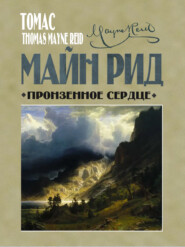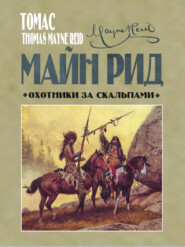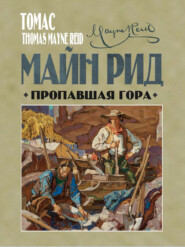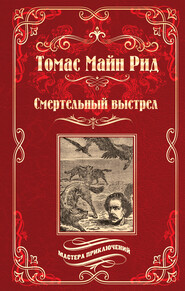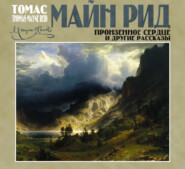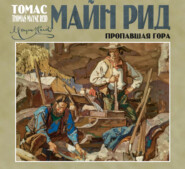По всем вопросам обращайтесь на: info@litportal.ru
(©) 2003-2024.
✖
The Cliff Climbers
Настройки чтения
Размер шрифта
Высота строк
Поля
“What is it?” asked Karl, in a tone that betrayed his interest in what Caspar had said.
“Eel-skins!” was the laconic answer.
Chapter Fifty.
The skin balloon
“Eel-skins,” said Caspar, repeating the phrase, as he saw that Karl hesitated before pronouncing an opinion. “Don’t you think they would do?”
Karl had it on the tip of his tongue to cry out – “The very thing!” but something withheld him from making this unqualified declaration.
“They might – it is possible they might,” said he, apparently debating the question within himself – “just possible; and yet I fear – ”
“What do you fear?” asked Caspar.
“Do you think they would not be strong enough?”
“Strong enough,” replied Karl. “That’s not what I fear.”
“The air can’t pass through an eel-skin?”
“No – not that.”
“At the seams, perhaps? We can stitch them neatly; and then gum them over at the joinings. I’ll warrant Ossaroo can sew like a shoemaker.”
The shikaree could do all that. Karl knew it. It was not there the difficulty lay.
“The weight, then?” pursued Caspar interrogatively.
“Precisely that,” answered Karl; “I fear they will be too heavy. Bring one, Ossaroo; and let us have a look at it.”
The shikaree rose from his seat; and going into the hovel, returned presently – bringing back with him a long shrivelled object, which any one could tell to be a dried eel-skin.
There were many like it inside: for they had carefully preserved the skins of the eels they had caught, induced to do so by a sort of presentiment, that some day they might find a use for them. In this case their prudent providence was likely to prove of service to them.
Karl took the skin; and, holding it out on the palm of his hand, appeared to make an estimate of its weight. Caspar watched his brother’s countenance, and waited to hear what he would say; but Karl only expressed himself by a doubtful shake of the head, which seemed to show that his opinion was against the eel-skins.
“They might be made much lighter, I fancy,” suggested Caspar: “scraping would do a deal for them; and by the way, why would not boiling make them light enough? It would take all the fatty, oily substance out of them.”
“There’s something in what you say,” rejoined Karl, apparently impressed by the last suggestion. “Boiling might render them a good deal lighter. We can easily try it.”
As Karl said this, he proceeded to the boiling spring, and plunged the eel-skin under the water. There it was permitted to remain for about half an hour, when it was taken out; and, after being scraped with the blade of a knife, was spread upon a rock, under the sun, where it would soon get thoroughly dry.
They all waited patiently for the completion of this process. The result was of too interesting a character to allow of their occupying themselves with anything else.
In due time the eel-skin had become sufficiently dry, to be submitted to examination; and Karl, once more taking it up, balanced it upon his palm.
Tested, even in this inexact fashion, it was evidently much lighter than before; and, by the gratified look with which the philosopher regarded it, he appeared to be much better satisfied with its weight. Still, however, he was not sanguine: as his words testified. They were almost a repetition of what he had said before.
“It may do – it is just possible. At all events, there can be no harm in trying. Let us try it, then.”
To say, “Let us try it,” meant the same as to say, “Let us make the balloon.” The others understood that; and of course acquiesced in the determination.
As there was nothing to interfere with the immediate commencement of the work, they resolved to set about it at once; and in fact did set about it without farther delay.
The number of eel-skins on hand, though very considerable, would not be near enough for covering a balloon; and therefore Ossaroo went to work with his hooks and lines to catch a few hundreds more. Karl was able to tell how many it would take; or he could at least make an estimate sufficiently exact for the purpose. He designed a balloon of twelve feet diameter: for he knew that one of less size would not have power enough to carry up the weight of a man. Of course, Karl knew how to calculate the surface of a sphere whose diameter should be twelve feet. He had only to multiply the diameter on the circumference; or the square of the diameter on the fixed number 3.1416; or find the convex surface of the circumscribing cylinder; or else find four times the area of a great circle of the said sphere. Any one of these methods would give him the correct result.
On making the calculation, he found that a sphere of 12 feet diameter would have a surface of 452 square feet, within a trifling fraction. Therefore 452 square feet of eel-skins would be required to cover it. In other words, that quantity would be required to make the balloon.
As the eels happened to be of large size – most of them being over a yard in length, and full four inches in average girth – the skin of one when spread out would yield about a square foot of surface. Taking large and small together – and allowing for waste, the heads and tails that would have to be chopped off – Karl calculated that he would get nearly a square foot each out of the eels; and that about five hundred skins would make the balloon bag. But as they would have to be cut occasionally with a slant, in order to get the globe shape, perhaps a few more would be needed; and therefore Ossaroo was to keep his baits in the water, until the requisite number of eels should be hooked out of it.
Ossaroo had another department assigned to him besides catching the fish; and one that took up more of his time: since the baiting of the hooks, and looking after them, required only his occasional attention. Spinning the thread by which the skins were to be sewed together, was a much more delicate operation: since in these both strength and fineness were absolutely necessary. But as Caspar had said, Ossaroo was an adept with the distaff; and several large skeins of the finest twist were soon turned off from his nimble fingers.
When enough thread had been thus produced, Ossaroo proceeded to making the cords and stronger ropes, that would be needed for attaching the “boat” – as well as to hold the balloon in its place, while being got ready for its ascent.
Caspar’s employment was – first, the skinning of the eels; and afterwards the scraping, boiling, and drying of the skins; while Karl, who acted as engineer-in-chief, besides giving a general superintendence to the work, occupied himself in imparting the final dressing to the material, and cutting it into such shapes, that it could be closely and conveniently stitched together.
Karl had also made an excursion into the forest, and brought back with him large quantities of a gum, which he had extracted from a tree of the genus ficus– a sort of caoutchouc– which is yielded by many species of ficus in the forests of the Lower Himalayas. Karl had gone in search of this substance, because he knew it would be required for paying the seams, and rendering them air-tight.
When they had pursued their various avocations for about a week, it was thought that material enough of every kind was collected and made ready; and then Ossaroo was set to stitching. Fortunately, they were provided with needles: for these had formed a part of the accoutrement of the plant-hunters – when originally starting upon their expedition.
As neither Karl nor Caspar had any experience in handling such sharp tools, the sewing had all to be done by Ossaroo; and it took another full week to accomplish this Sartorean task.
At the end of that time, it was fully accomplished and complete; and the huge bag was ready to receive its coat of gum varnish. A day sufficed for “paying;” and nothing more remained but to attach the “boat,” or “car,” that was to carry them aloft in their daring flight into the “azure fields of air.”
Chapter Fifty One.
Making ready for the ascent
Karl was the only one of the three who knew anything about a balloon, or the mode of inflating it. Had it been their intention of navigating the air, an apparatus would have been required to carry up a fire. This Karl could easily have contrived. A basket of wicker-work, as he had said, well lined with clay, would have answered the purpose after a fashion; but as they did not intend to use the balloon for any purpose beyond making the single ascent to lift them over the cliffs, a continuous fire would not be required. The first inflation would answer that end well enough; and therefore a grate or fire-basket was not thought of.
The car to carry the passengers – or boat, as it is sometimes styled: since, for reasons easily understood, it is usually a boat – was quite another affair; and had it been designed for more than a mere temporary use, would have taken a considerable time in the making; but for what they wanted almost anything would serve; and all that they intended employing was a sort of wicker basket, or deep hamper, suspended by stout ropes. This had been already prepared; and only needed to be attached to the bottom of the air-bag.
In the present case, the “bottom of the bag” is quite a figure of speech —lucus a non lucendo. Strictly speaking, it had no bottom; but, where this should have been, there was a round aperture, formed by a stout hoop of ringall bamboo, to which the skin covering was lashed, and to which, also, the cords intended to sustain the afore-mentioned basket, as also the stay-ropes, were to be attached.
The object of this aperture will be easily understood. It was by it that the hot air was to be admitted inside the balloon, for the purpose of inflating it.
And how was this hot air to be obtained? That was a question which Karl alone could answer. Of course, fire was to be the agent for producing it: but how was it to be got into the bag? Karl could tell that, and Karl only; and, now that the time had arrived for trying the experiment, he condescended to explain to his coadjutors how he meant to proceed.
The bag was to be propped up between tall stakes set in the ground; its bottomless bottom turned towards the earth, so that the aperture would be below. Under this a fire was to be kindled – not, however, until everything else should be ready; and the hot air rising up into the aperture would enter the balloon, and cause it to swell out to its full globular dimensions. More hot air being admitted, the cooler atmosphere within would be expelled, the balloon would become lighter than the surrounding air, and by the simple principle of atmospheric pressure it would ascend into the air. It was expected it would do so – it was hoped it would.
To say the truth, the hopes of the engineer were far from being high – his expectations anything but sanguine. He had observed all along, that, notwithstanding the process employed for lightening the eel-skins, they were still far heavier than silk; and perhaps, after all, the experiment might not succeed. There was another circumstance that had as much weight on the mind of Karl as the eel-skins; and that was quite as likely to have a bearing upon the balloon. He had not overlooked the fact, that the spot, from which they proposed making the ascent, was nearly ten thousand feet above the level of the sea. He knew that the atmosphere in such a situation would be extremely rarefied, and that a balloon, which might easily ascend many thousand feet into the air starting from the level of the sea, would not stir from the ground if carried to the top of a mountain ten thousand feet high. This was the circumstance which preyed upon the spirit of the young philosopher, and hindered him from entertaining any very sanguine hopes of success in the experiment they were making.
The philosophical truth had been before his mind from the first, and at times had almost determined him to abandon the project. But as he was not sufficiently acquainted with the laws of aerostation as to be certain of failure, he had worked on with the determination to seek success, though it must be acknowledged with but faint hopes of finding it.
Thus stood matters on the morning when it was finally arranged to launch their great aerial ship, and ascertain whether it would swim.
All things were made ready at an early hour. The huge bag was set up between the supporting stakes the car was attached to it, as also several ropes to keep the balloon from being carried away; and these were fastened at their other ends to stout pegs, driven firmly into the ground; while a little furnace of stones was built underneath to hold the fire, whose ascending caloric was to expand the balloon, and raise it into the air.







